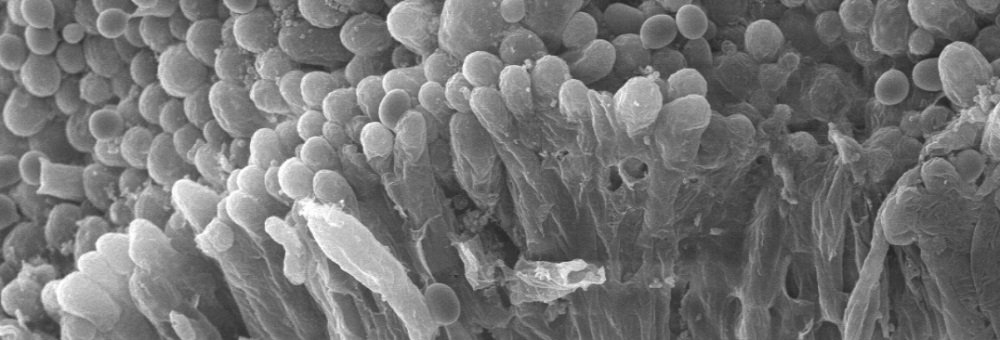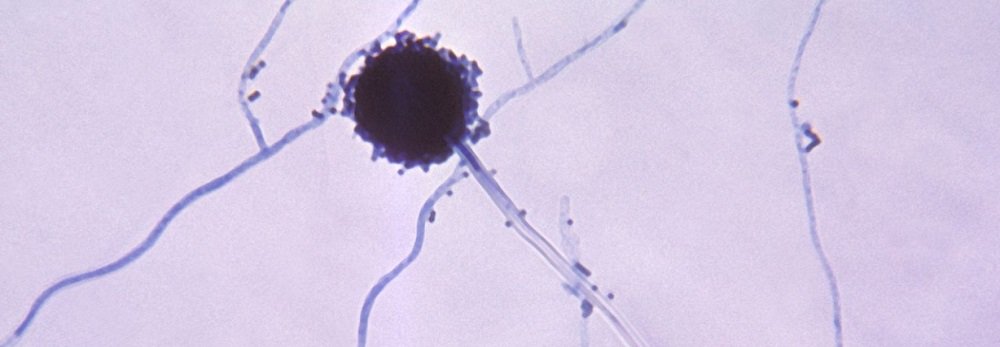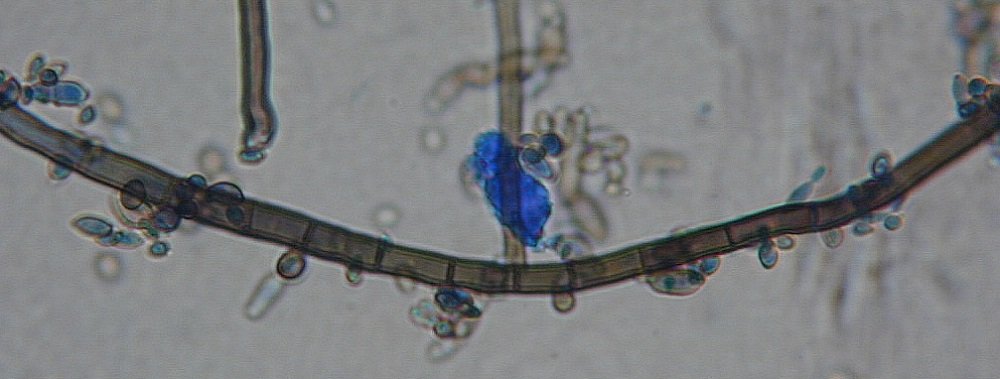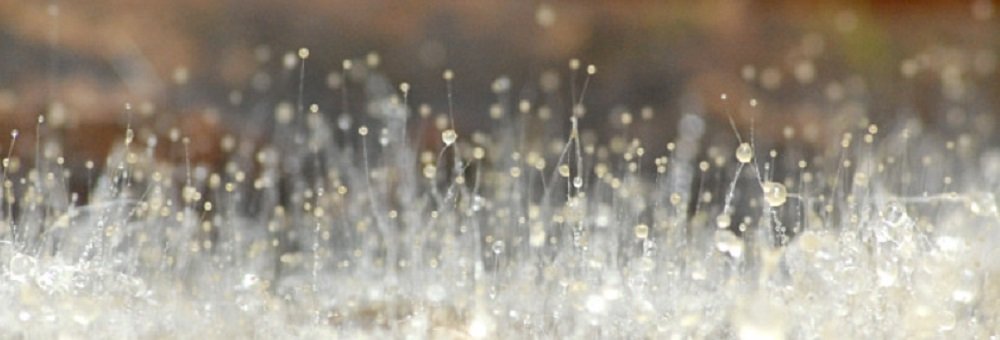Are you intrigued and a little bit disgusted by the presence of mold in your home? Where does it come from? How can you get rid of it easily? Is this mold toxic, or is it non-threatening? There are plenty of questions to be posed about mold, that’s for sure.

Today we’ll be running through different types of mold and where you’re likely to find them, so keep your eyes peeled for any that you recognize and get ready to learn a little bit about a few you may not have known existed.
Acremonium
A toxigenic mold, Acremonium often begins as a moist patch, and evolves into a powdery substance that is most commonly found on drywall ceiling tiles, or inside window sealants, humidifiers, or drain pans.
Acremonium can be white, pink, orange, or grey in color, and should be avoided when possible because it can cause some serious damage if left untreated over time.

Related Post: Does a Dehumidifier Help with Mold?
Alternaria
Alternaria is certainly less toxic than Acremonium, and whilst it can cause fungal allergies, reports of infections suggest that it doesn’t occur frequently.
This mold type loves to grow on plants, food, and rotting manure, and due to this, it’s often found outdoors. It’s been suggested that Alternaria is developing resistance to some fungicides, which means it could become more of a problem in the future.

Related Post: Best Dehumidifiers for Mold
Aspergillus
Aspergillus is one of the main culprits for causing respiratory damage such as asthma in a large portion of American households. Whilst it begins its life as a mere allergenic mold spore, it can become more toxic over time.
This mold produces many colors, so it’s not always easy to discern from other types of mold. However, it mostly creates chain like mold trails across surfaces. Luckily, Aspergillus is mostly found outdoors, on water damaged buildings or structures.

Related Post: Best Humidifiers for Asthma
Aureobasidium
This is a mildew type of mold that thrives in colder climates and can usually be found in damp windowsills or behind wallpaper. It’s most commonly black, although it can also be pink, so it’s quite easy to spot.
Aureobasidium can be an allergenic mold, so it’s best not to breathe it in, and it can also cause rashes on the skin and itchy eyes, so you should never touch it.

Basidiospores
Basidiospores are a common fungal mold that can be found in the form of mushrooms and toadstools and are heavily associated with dry rot. These spores can cause allergic reactions in indoor areas, and have even been known to contribute to the collapse of rotting buildings.
Botrytis
This type of mold is most commonly associated with plants and can cause severe allergic reactions or asthma attacks if you become exposed to it indoors.
Botrytis is usually found in warm and humid environments, such as greenhouses.

Related Post: Best Air Purifiers for Mold
Chaetomium
Whilst Chaetomium has not been discovered to be allergenic or toxic, you should still handle this mold with care. Usually found in rotting wood, water damaged drywall, basements and old sinks, this mold gives off a musty odor.
Chaetomium can change color over time, with black being its final color change and it has a cotton-like texture.

Cladosporium
This is a mold that lives on old carpets, upholstery, inside cupboards, under floorboards and in furniture, and can thrive in warm and cold temperatures. Its texture can be classed as suede-like, and can be olive green in color.
Whilst not toxic, Cladosporium is an allergenic, so it’s highly advised to not breathe it or touch it as this can cause eyes, nose, and lung problems, asthma, and itchy skin.

Related Post: Why is Vapor Steam Cleaning Good For Dust Mites and Molds?
Fusarium
With its slimy spores that can thrive even in cold temperatures, Fusarium is one to watch. It can be present in water damaged carpets, fabrics, and even wallpapers in homes with severe water damage.
You could end up with a sore throat, itchy skin, itchy eyes and even dermatitis if you breathe in this toxic mold, and what’s more, if you breathe it in for a prolonged period of time, you could face brain abscesses, bone infections, or at its worst, internal bleeding. This is a highly toxic mold.

Gram-Negative Rods
Able to cause headaches and allergic reactions, gram-negative rods are a bacterial mold that are most commonly found in water damaged structures and standing water.
Mucor
A thick white or grey patch of fast growing mold, Mucor is often found in damp carpets, or close to sources of air conditioning.
Mucor is classed as being a mild allergenic, but it can cause serious respiratory difficulties, exacerbate asthma, and even damage the lungs completely.

Related Post: 3 Ways to Get Mold Out of Your Carpet
Penecillium
The most common form of mold found on food, penecillium, or penicillin, is mostly found in damp or wet areas and is easily distinguished by its blue-green coloring and velvety texture.

If left to grow indoors for prolonged periods of time, penecillium can become airborne and its spores can travel through the air causing possible serious respiratory damage. This mold is extra dangerous for immunocompromised people and should always be handled with care.
Stachybotris
Another common household mold characterized by its outward reaching, black, slimy spores, Stachybotris is a toxic mold that thrives in damp or wet areas of the home, and is most often found along walls.
This mold can cause severe breathing difficulties, nose bleeds, persistent coughing, a fever, and painful headaches, and should be avoided at all costs or removed immediately.
Related Post: Can a Dehumidifier get Rid of Mold?
Ulocladium
Our final mold type is once again characterized by its black spores, and is mostly found in water damaged homes. It can appear in windowsills, kitchens, bathrooms and basements, and can be concerning health wise.

Skin ailments like rashes and itching skin can occur, as well as asthma-like symptoms if you breathe in this allergenic mold.
Conclusion
With so many variants of mold to look out for, it can be a challenging job to work out which one you’re dealing with and how to get rid of it. Our advice would to be to call in professional help. They have the tools to deal with mold appropriately, and safely.
If you think you can tackle a small mold problem alone, always wear protective gear, and air out the room you’re dealing with well.
Our Recommended Dehumidifiers
If you have any questions or comments, please add them below in the comment section. Similarly, please let us know if you spot any mistakes or omissions. Thanks!
Sources
Mold. Centers for Disease Control and Prevention.
Basic Facts About Mold and Dampness. Centers for Disease Control and Prevention.
Occupational Health Guideline for Hydrogen Peroxide. Centers for Disease Control and Prevention.
Last Update: 2024-04-23 | Affiliate links/Images from Amazon Product Advertising API



